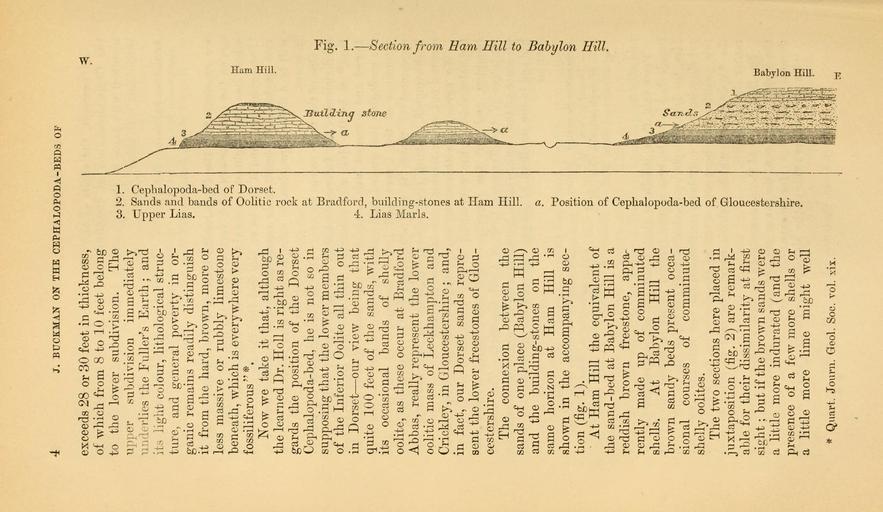MAKE A MEME
View Large Image

| View Original: | The_Quarterly_journal_of_the_Geological_Society_of_London_(12735563475).jpg (3200x1856) | |||
| Download: | Original | Medium | Small | Thumb |
| Courtesy of: | commons.wikimedia.org | More Like This | ||
| Keywords: The Quarterly journal of the Geological Society of London (12735563475).jpg J BTJCKMAN ON THE CEPHALOPODA-BEDS OF <br> exceeds 28 or 30 feet in thickness <br> of which from 8 to 10 feet belong <br> to the lower subdivision The <br> upper subdivision immediately <br> underlies the Fuller's Earth ; and <br> its light colour lithological struc- <br> ture and general poverty in or- <br> ganic remains readily distinguish <br> it from the hard brown more or <br> less massive or rubbly limestone <br> beneath which is everywhere very <br> f ossiliferous <br> Now we take it that although <br> the learned Dr Holl is right as re- <br> gards the position of the Dorset <br> Cephalopoda-bed he is not so in <br> supposing that the lower members <br> of the Inferior Oolite all thin out <br> in Dorset ” our view being that <br> quite 100 feet of the sands with <br> its occasional bands of shelly <br> oolite as these occur at Bradford <br> Abbas really represent the lower <br> oolitic mass of Leckhampton and <br> Crickley in Gloucestershire ; and <br> in fact our Dorset sands repre- <br> sent the lower freestones of Glou- <br> cestershire <br> The connexion between the <br> sands of one place Babylon Hill <br> and the building-stones on the <br> same horizon at Ham Hill is <br> shown in the accompanying sec- <br> tion fig 1 <br> At Ham Hill the equivalent of <br> the sand-bed at Babylon Hill is a <br> reddish brown freestone appa- <br> rently made up of comminuted <br> shells At Babylon Hill the <br> brown sandy beds present occa- <br> sional courses of comminuted <br> shelly oolites <br> The two sections here placed in <br> juxtaposition fig 2 are remark- <br> able for their dissimilarity at first <br> sight ; but if the brown sands were <br> a little more indurated and the <br> presence of a few more shells or <br> a little more lime might well <br> Quart Journ Gcol Soc vol xix <br> OS tO –º-' <br> a co p <br> o <br> p <br> a 1 <br> <br> 5 o- <br> £L o <br> 5 t <br> bd <br> –º – <br> P <br> £ 2 <br> CO I ” I <br> So <br> T 1 <br> p <br> B <br> O <br> o <br> CD <br> cT <br> c <br> o <br> S3 <br> 4 S <br> w <br> r <br> mm g <br> hiH - <br> Pil i <br> a <br> Q <br> tts <br> t c <br> o 35818111 110705 51125 Page 4 Text 33 http //www biodiversitylibrary org/page/35818111 1877 Geological Society of London Biodiversity Heritage Library The Quarterly journal of the Geological Society of London v 33 1877 Geology Periodicals Smithsonian Libraries bhl page 35818111 dc identifier http //biodiversitylibrary org/page/35818111 smithsonian libraries Information field Flickr posted date ISOdate 2014-02-24 Check categories 2015 August 26 CC-BY-2 0 BioDivLibrary https //flickr com/photos/61021753 N02/12735563475 2015-08-26 19 58 19 cc-by-2 0 PD-old-70-1923 The Quarterly journal of the Geological Society of London 1877 Photos uploaded from Flickr by Fæ using a script | ||||